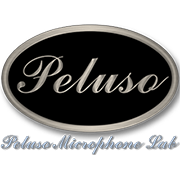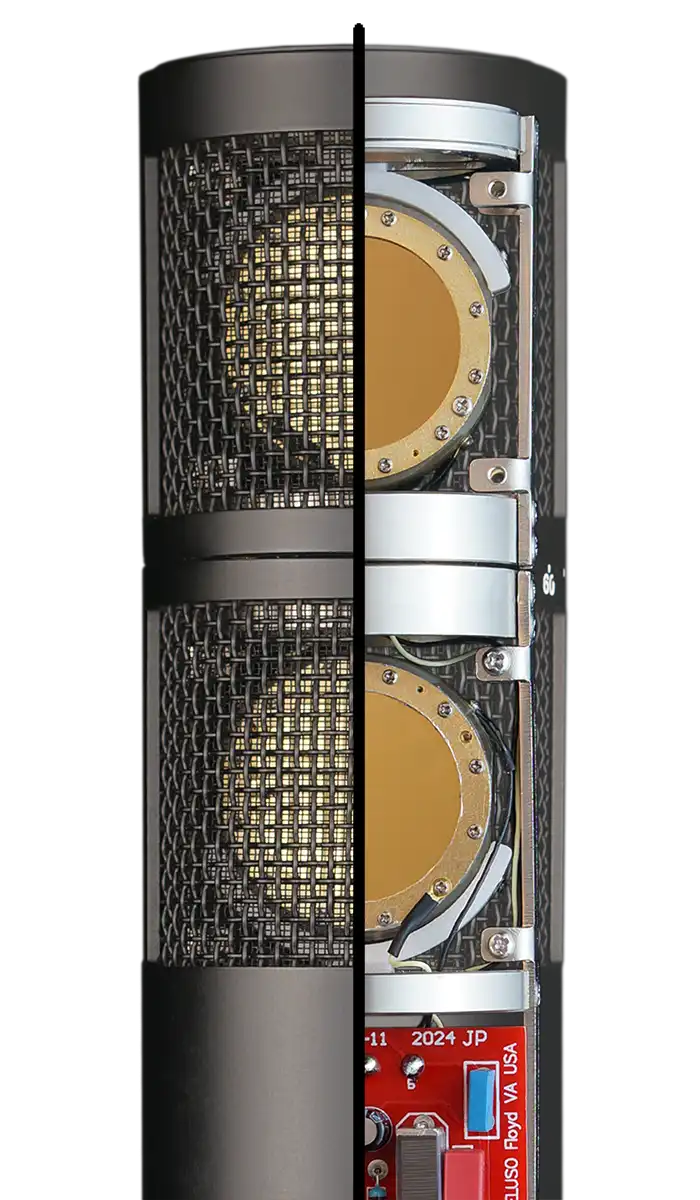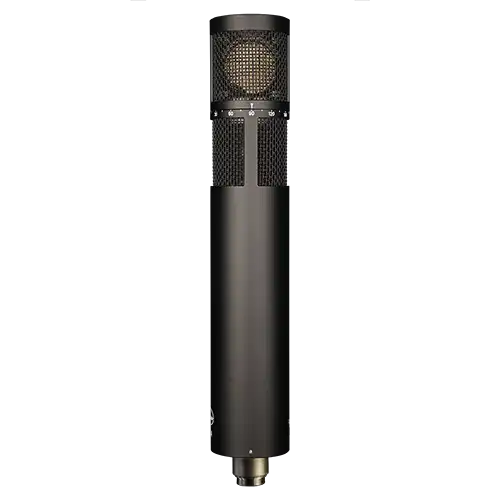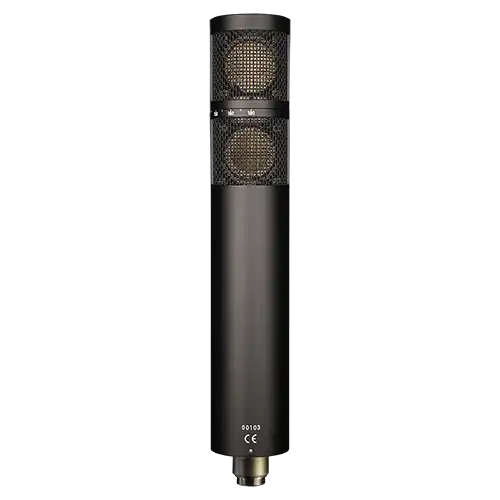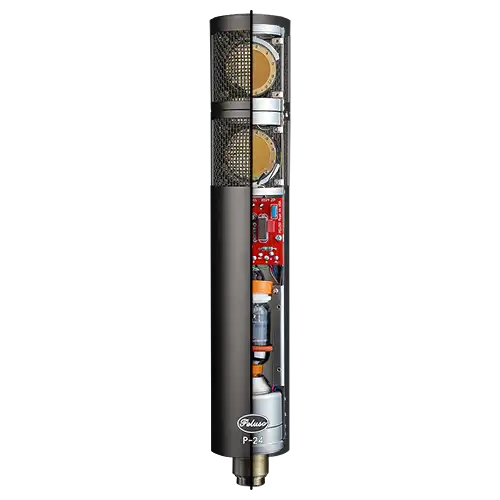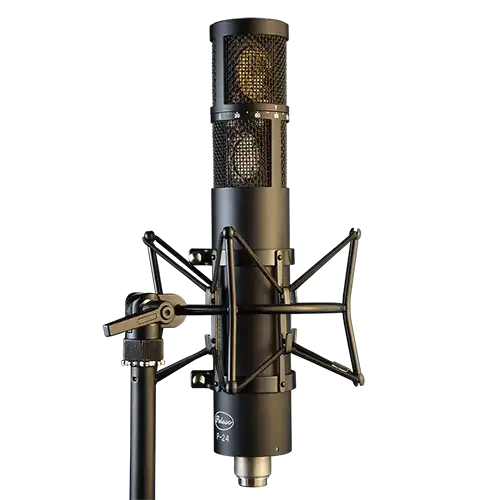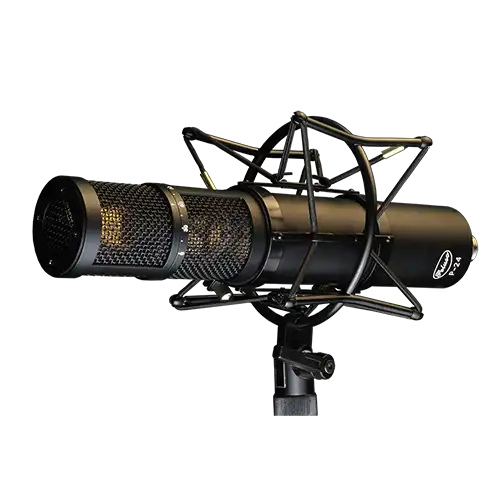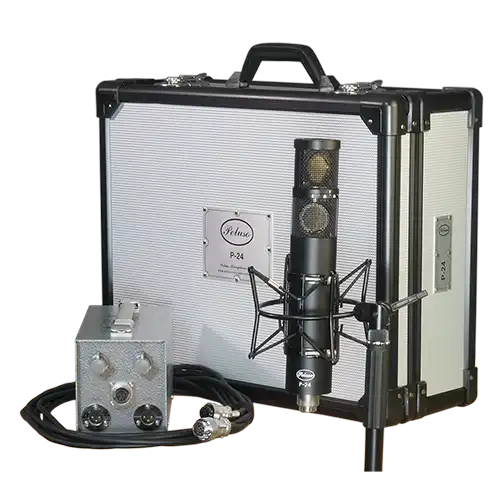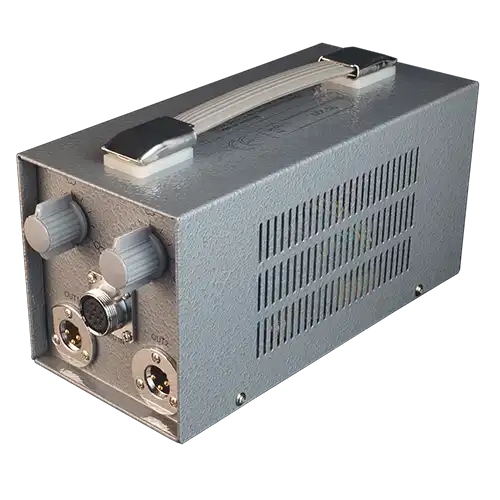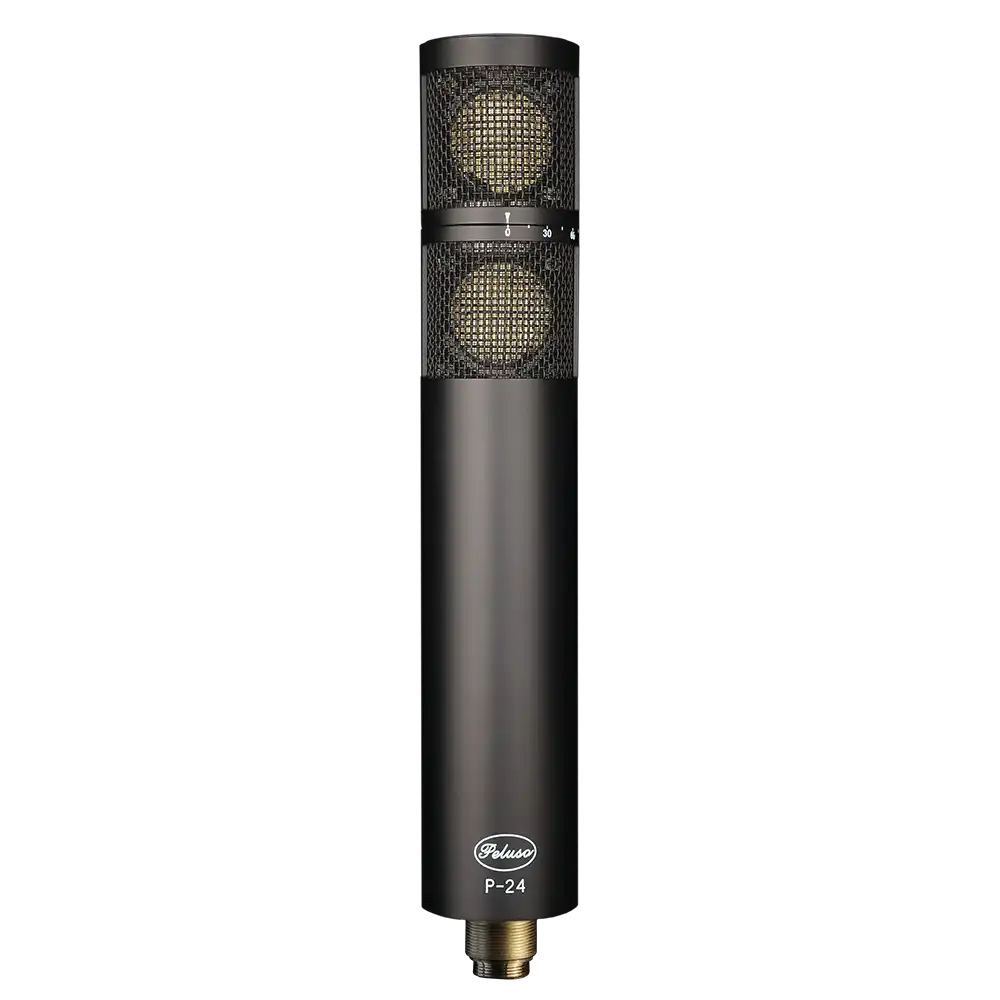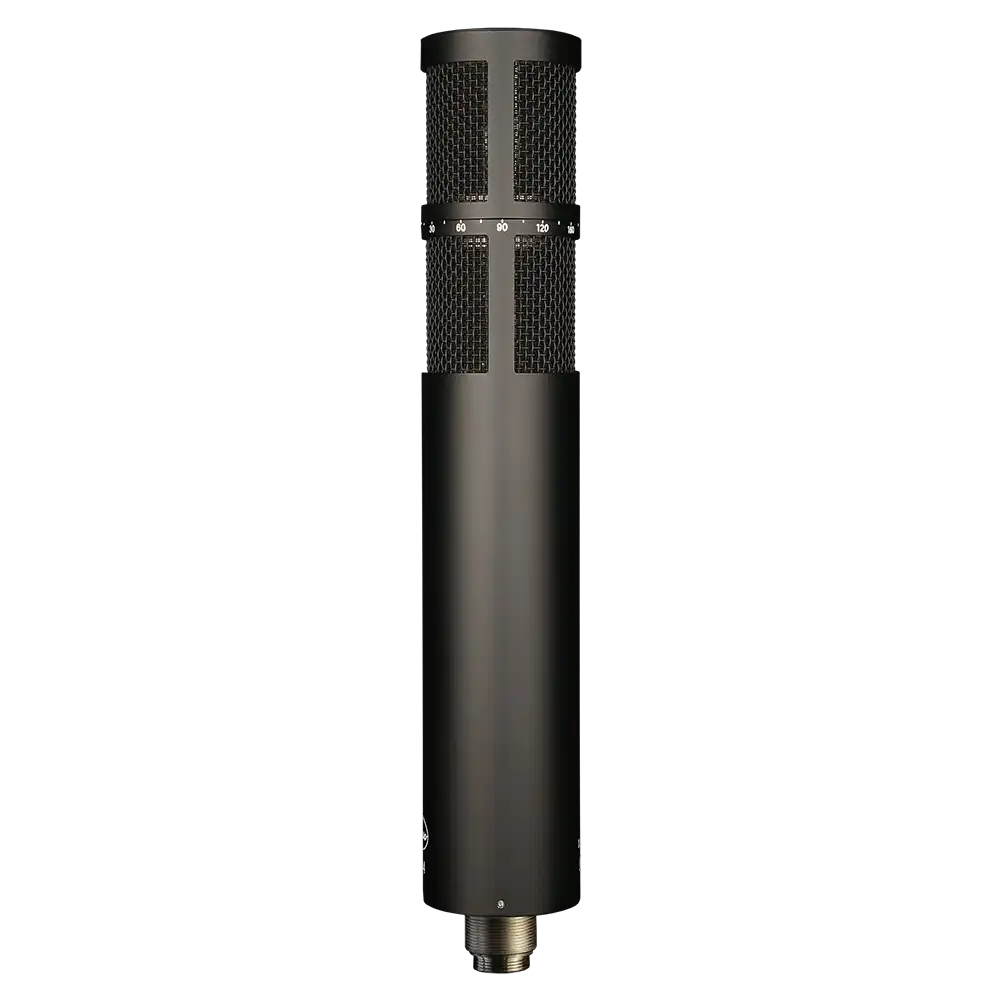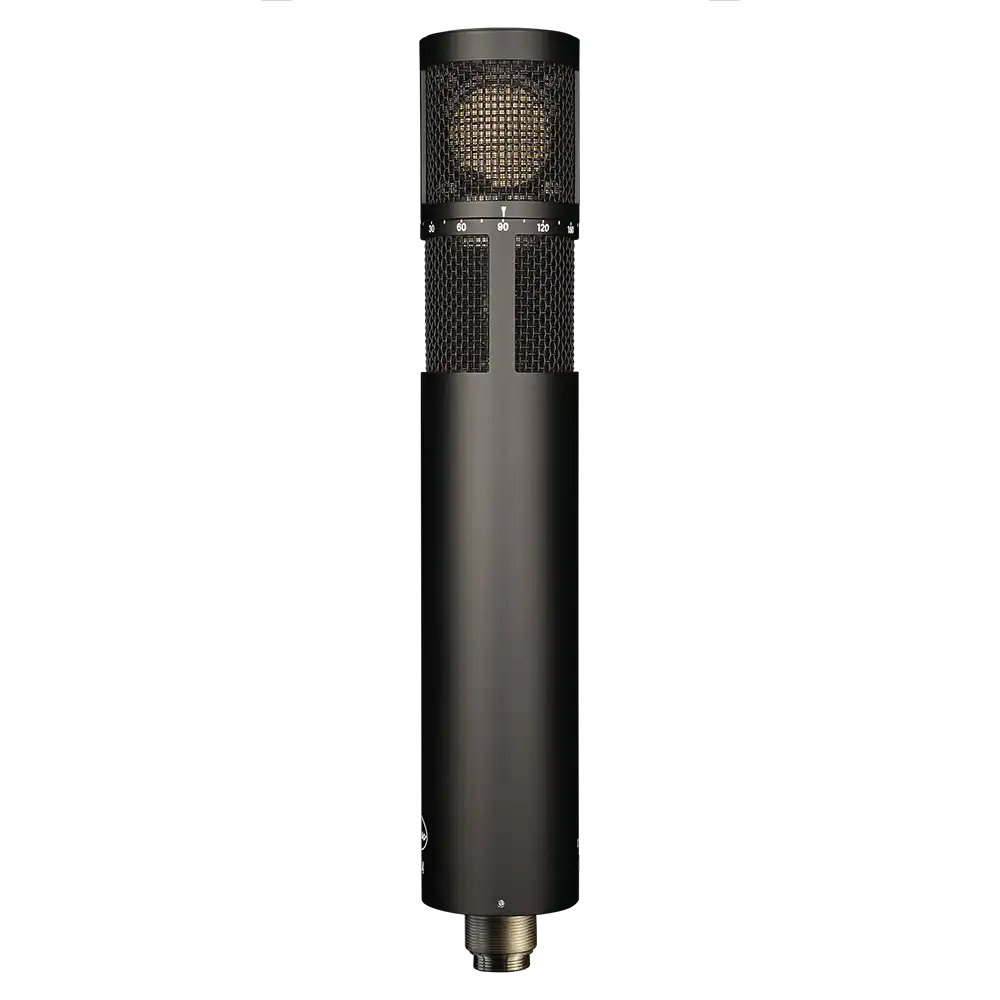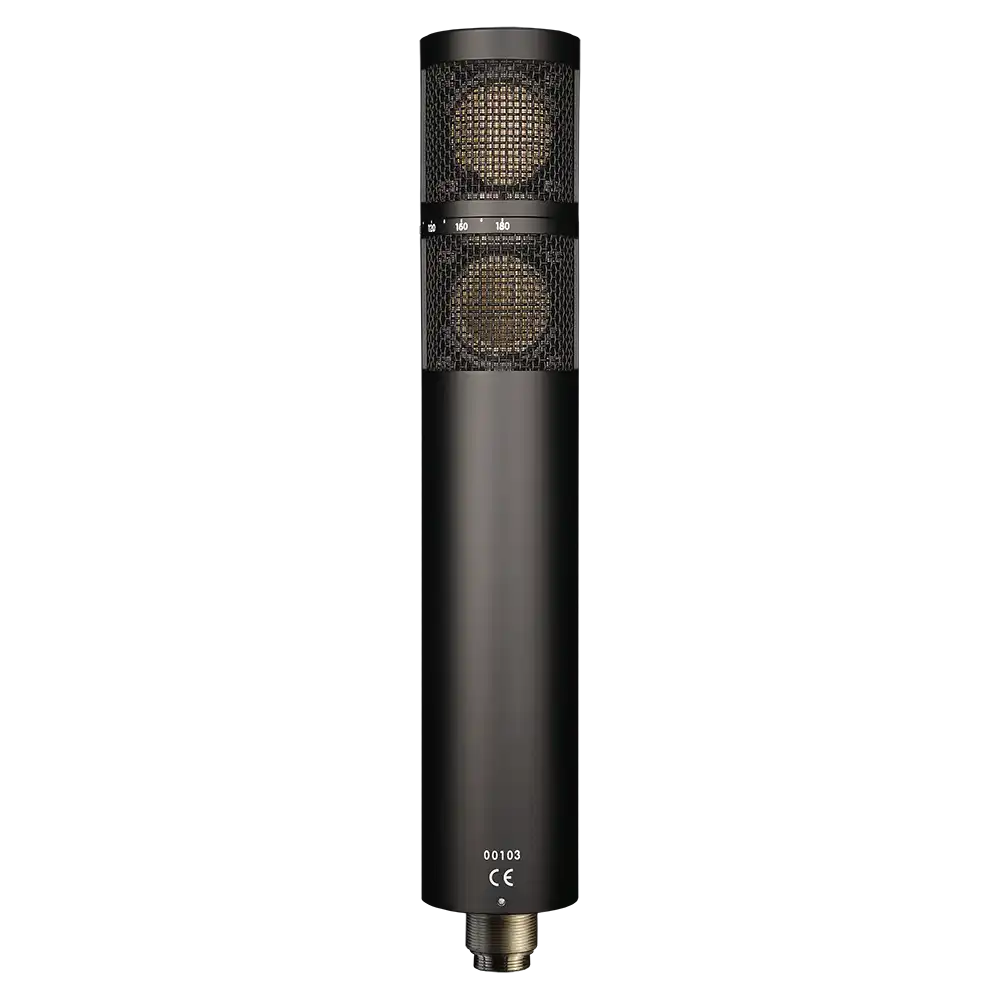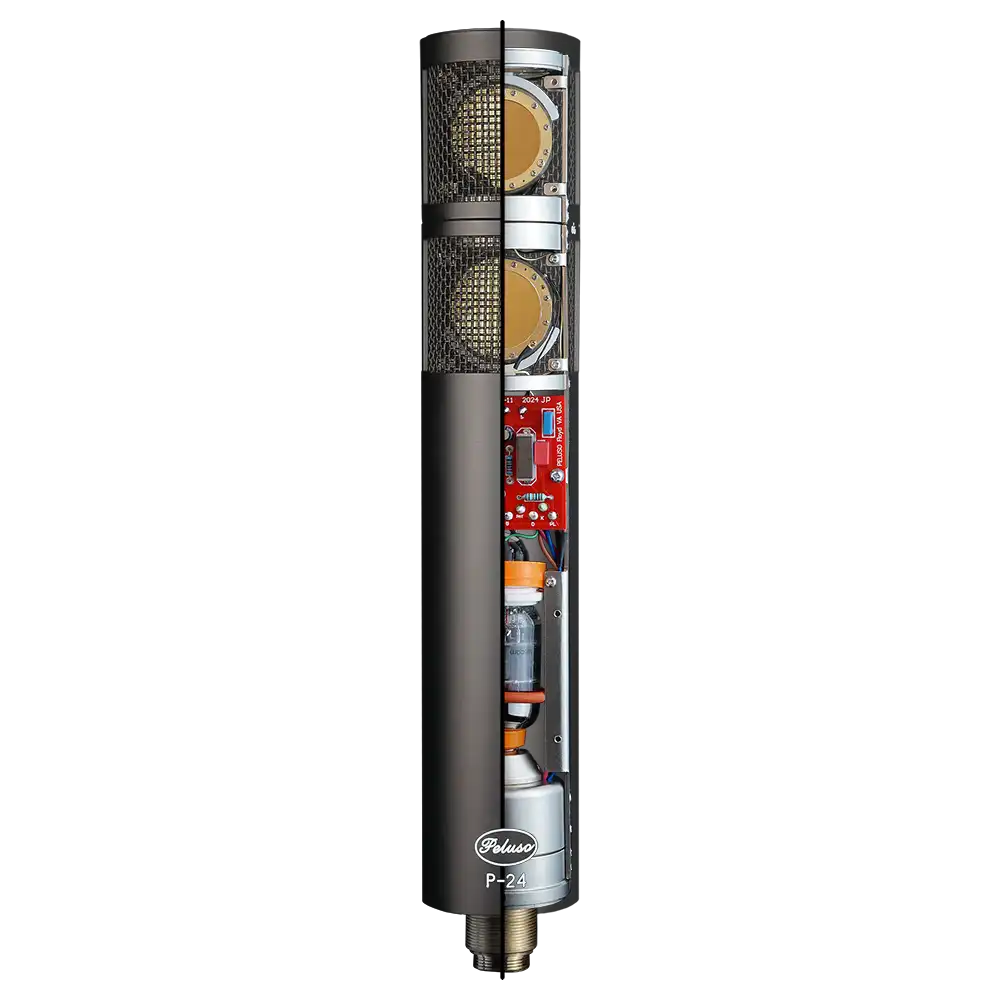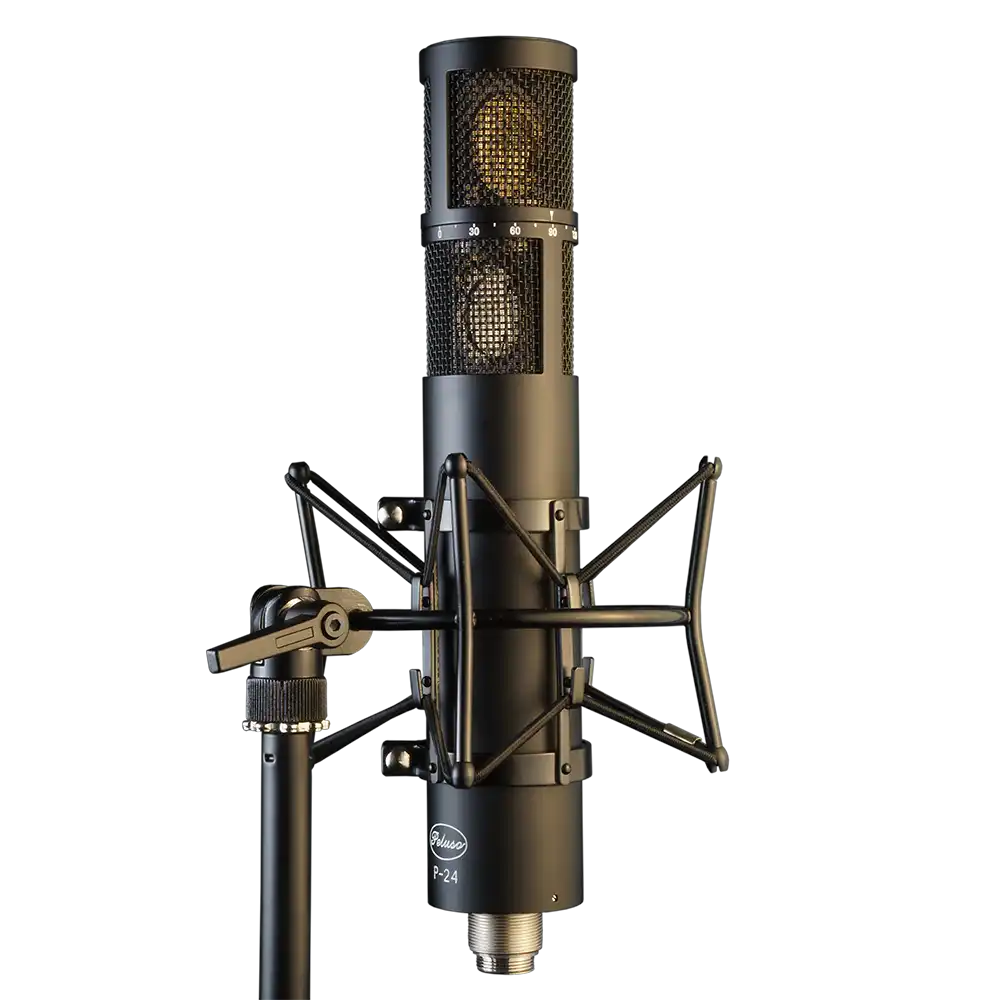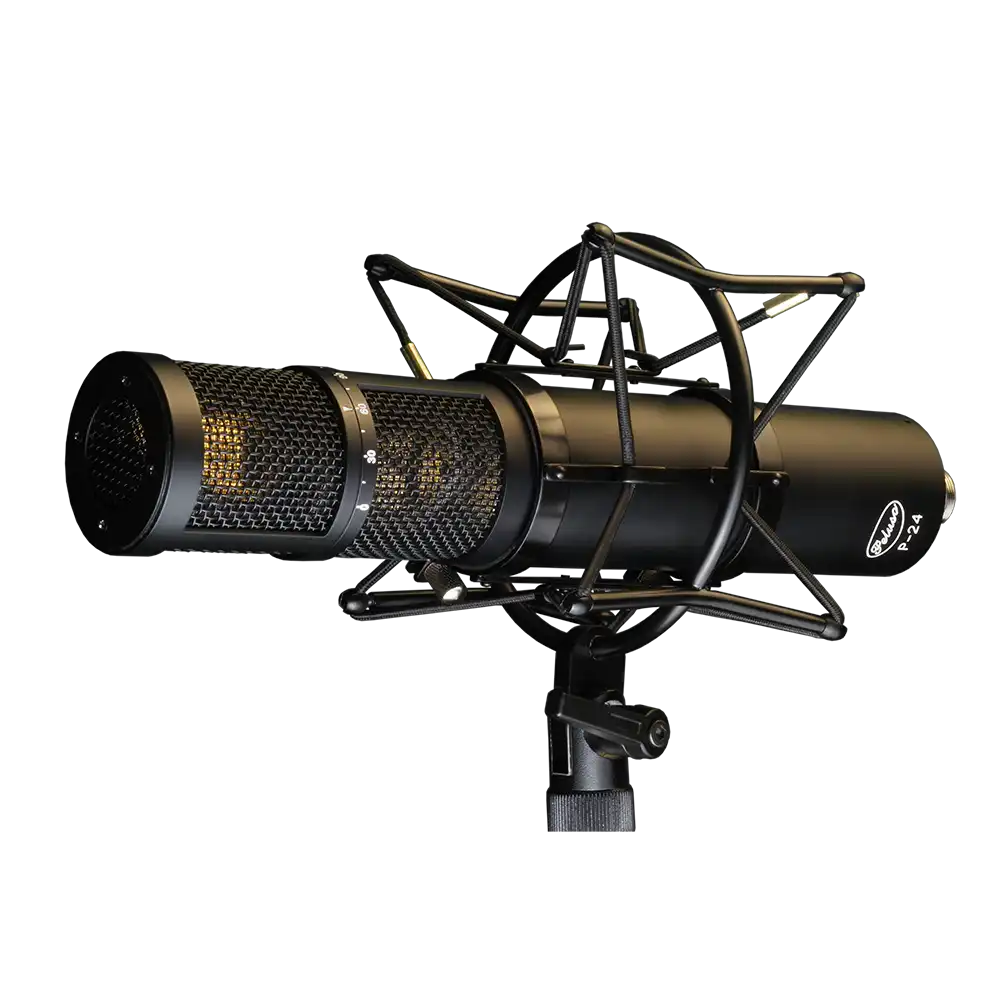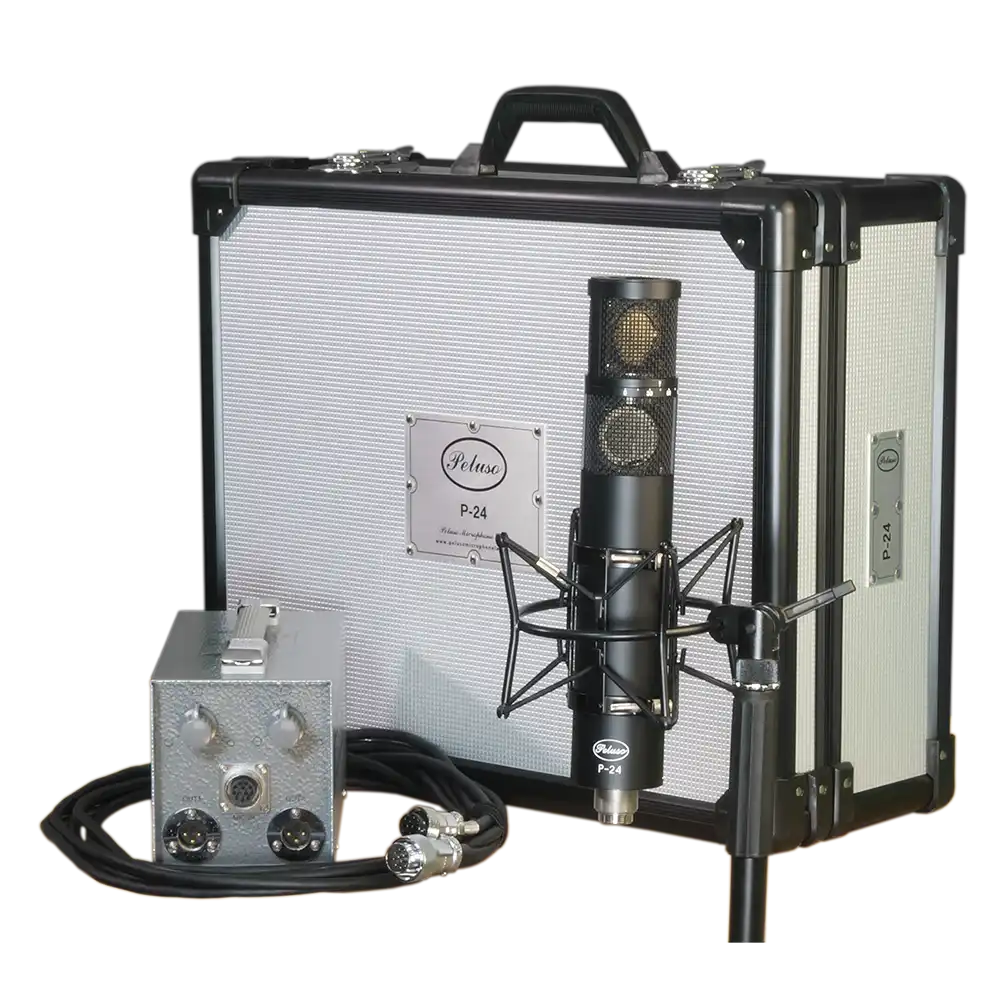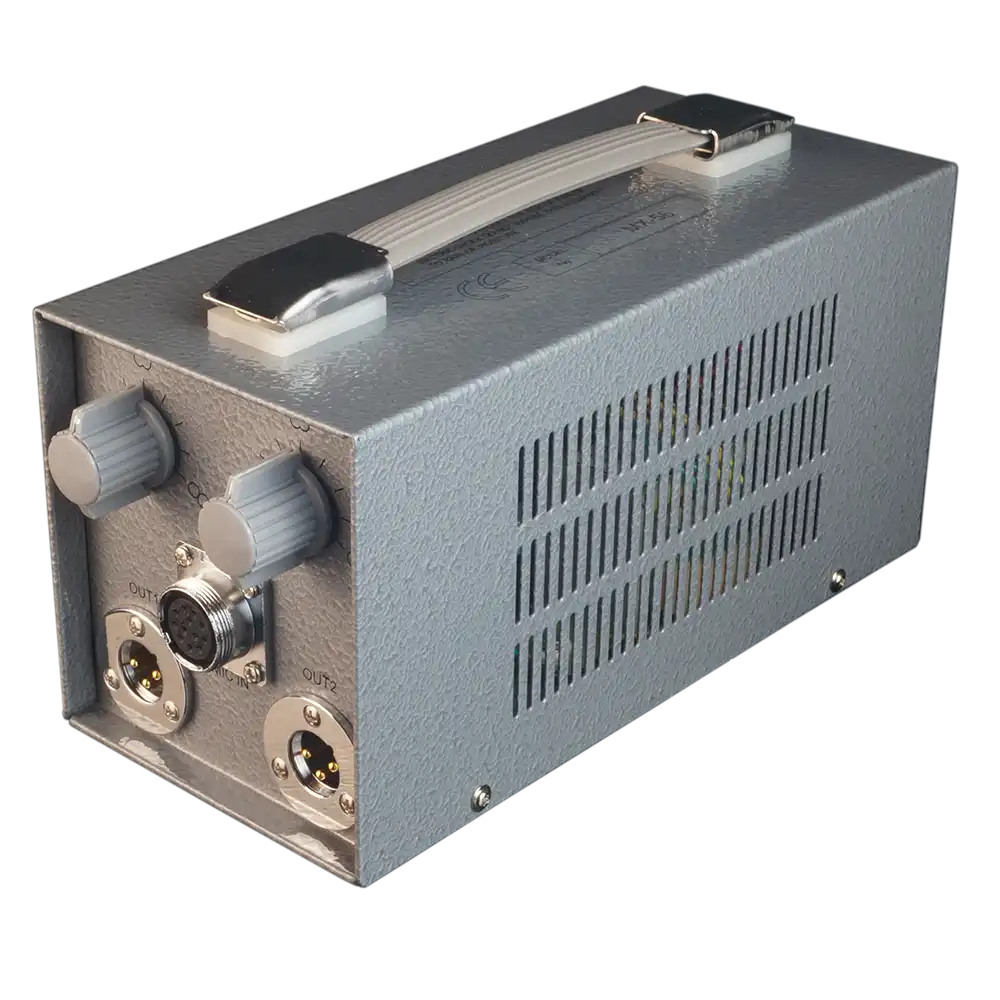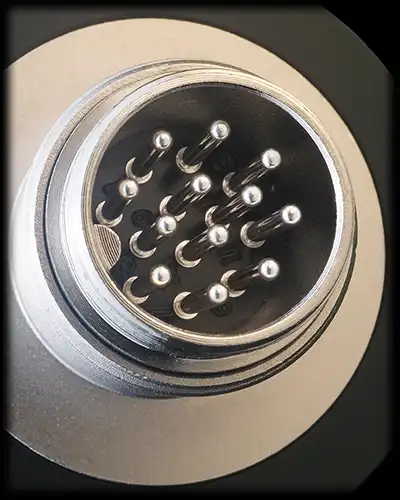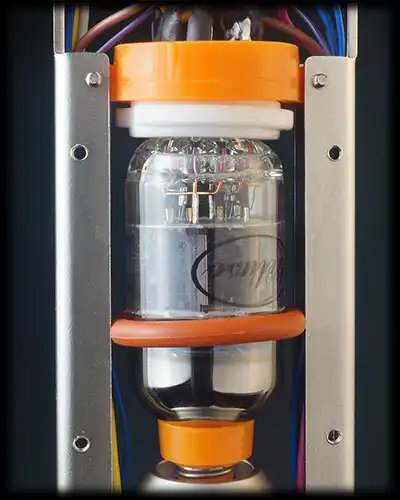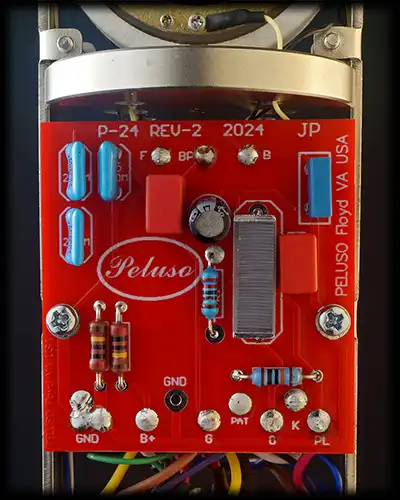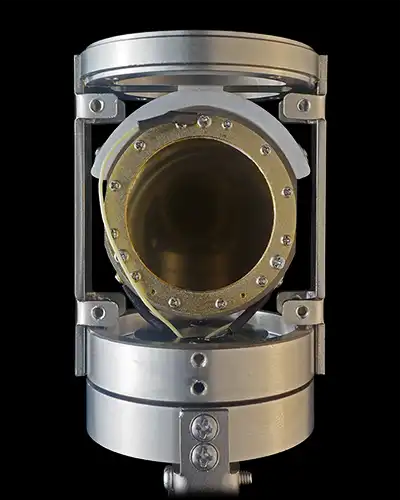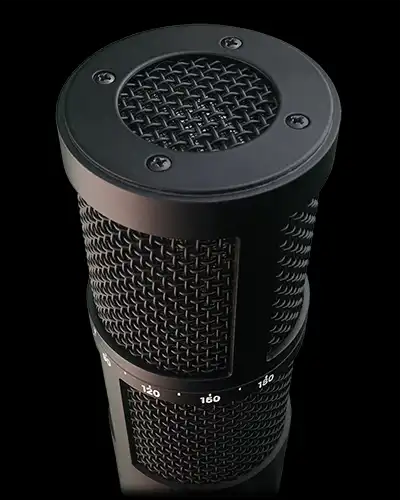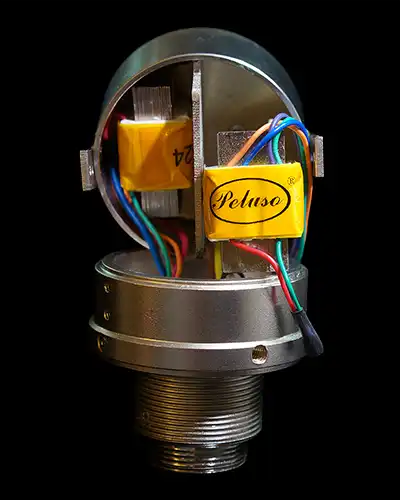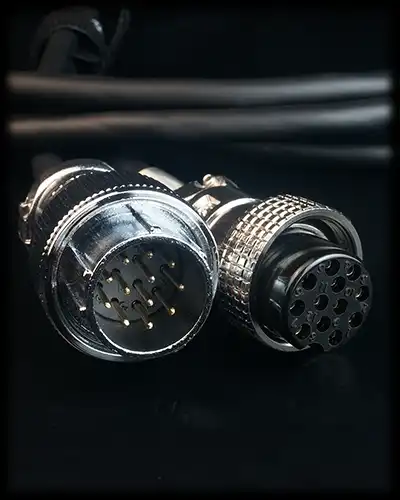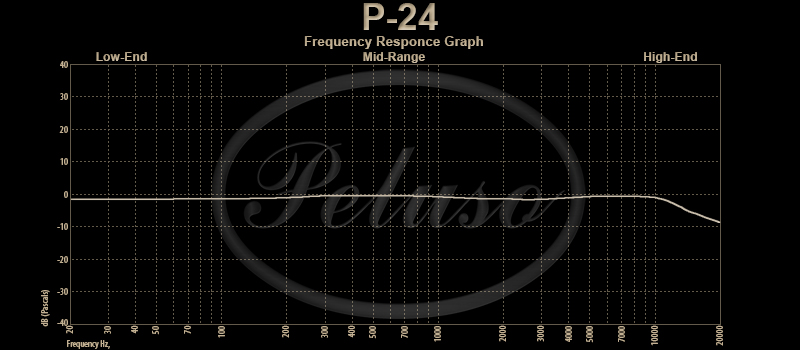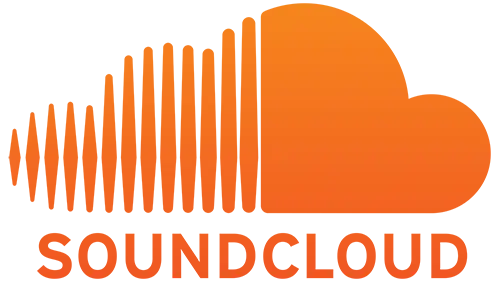The New P-24!
Now Shipping
Microphones
P-24
Stereo Vacuum Tube Large Diaphragm Condenser
The P-24 hosts two complete large diaphragm condenser (LDC) vacuum tube microphone systems within a single microphone body. The two capsules are located directly above each other with the upper capsule capable of rotating 180 degrees. This configuration provides for quick coincident capture in X-Y, Mid-Side, and Blumlein techniques. Both the upper and lower capsules have 9 independently selectable polar patterns controlled remotely at the microphone power supply. The two signal chains run independently through individual high impedance circuit boards and isolated custom transformers, both powered by a single vintage 6072AM glass triode vacuum tube. While the similarities between the P-12 and the P-24 (as with the C 12 and C24) run very deep, there are a few key differences. The primary differences are subtle and come from running both circuits from the single 6072AM tube. The tube grid is biased differently with the load of both circuits yielding a better low-end response. Additionally, the anode of the tube is grounded differently providing a smoother and fuller top end.
- Dual Large Diaphragm Condenser Capsules
- 32mm P-CK-12 Edge Terminated Capsule
- Glass 6072AM Vacuum Tube Amplifier Stage
- Dual Custom-Wound T14/1 Output Transformers
- 9-Polar Patterns
MSRP $3,999 USD
Microphone kit comes as a complete system including:
- P-24 Microphone
- Stereo Power Supply
- 12-Pin Screw-on Stereo Cable Assembly
- Shock Mount
- Locking Padded Flight Case
P-24 Gallery
A closer look
Features
A few details that make the P-24 so special
P-24 Technical Info
Detailed specifications
P-24 Technical Data
- Capsule Type: Dual Historically accurate P-CK12 32mm Condenser Pressure Gradient, edge terminated
- Frequency Range: 20Hz/24Khz
- Polar Pattern: 9 - Switchable from omni- to bi-directional
- Sensitivity: 11 mv/pa
- Impedance: 200 ohms
- SPL: 138 dB
- Equivalent Noise: 15 dB(A)
- Tube Type: Single 6072A-M
- Transformer: Dual T-14/1
- Power Requirements: Dedicated Power Supply, 115V or 230V AC
- Size: 50mm x 269mm
- Weight: 1058g
Stereo Miking
Techniques
Techniques and the Versatility of the P-24
The Peluso P-24 is a versatile stereo microphone. It employs two identical dual diaphragm condenser capsules. The upper capsule rotates 180 degrees from the lower capsules. Clear index markings on the head grille showing the rotational position of the capsule. Setup for a traditional X-Y or Mid-Side or Blumlein techniques can be quickly achieved by positioning the upper capsules at the 90 degree position. Users can experiment with other angles to achieve different stereo results.
One of the important benefits of a single stereo microphone is the coincident pair of diaphragms. With both diaphragms equal distance from the sound source, they both receive the sound at precisely the same moment giving great positional accuracy in the stereo image. This also provides a signal that is phase coherent, preventing phase cancellation.
Whether you are miking guitar, piano, ensembles, orchestras, drum overheads, room mics, percussion, full rock bands, or bluegrass single mic setups, the P-24 is an excellent choice for a detailed stereo capture. The nuance of each individual situation will inform what the best setting will be for you. Close miking an acoustic guitar is much different than miking an entire string ensemble. Drum overheads may require a different setup than a drum room mic. You may want more presence of the room acoustics, or more rejection from adjacent sources. The diagrams below will help you begin to understand the possibilities that are capable with the P-24.
Special Rejection in the Figure of '8' Pattern: The figure of ‘8’ pattern in a dual diaphragm condenser microphone capsule has its best rejection or null point at the sides of the capsule. When setting up a stereo miking scene this can be a very useful tool. This null point can be used to exclude one source from capture, or to widen the stereo capture. Take note of this null point in the technique diagrams below.
Blumlein Miking Technique:
First developed by Alan Blumlein in 1931 at Abbey Road studios in London. Blumlein technique has the capsules oriented at 90 degrees to each other with both capsules in a Figure of '8' pattern. One way to think of Blumlein is as an X-Y setup with both capsules in figure of '8'. It provides a 360° capture with great stereo separation.
- Blumlein
- Rotation: 90°
- (1) Lower Polar Pattern: Figure of 8
- (2) Upper Polar Pattern: Figure of 8
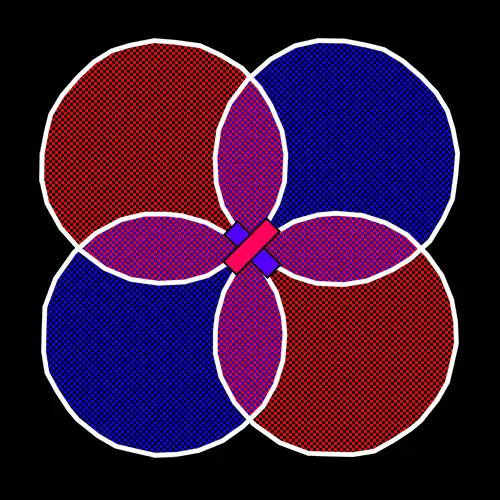
Mid-Side Miking Technique:
First developed by Alan Blumlein in 1933 at EMI, Mid-Side technique has the capsules oriented at 90 degrees to each other with the Mid (#2 Upper) capsule in a Cardioid pattern and the Side (#1 Lower) capsule in a Figure of '8' pattern. The key to this technique is having the null point of the side capsule aligned with the hot side of the Mid capsule. With a variety of Mid-Side processing techniques you can make your tracks sound wider, deeper, and more focused. There is a great deal of information online about this processing, as well as special plugins designed to help you make the most of this very powerful stereo imaging technique!
- Mid-Side Traditional
- Rotation: 90°
- (1) Lower Polar Pattern: Figure of '8'
- (2) Upper Polar Pattern: Cardioid
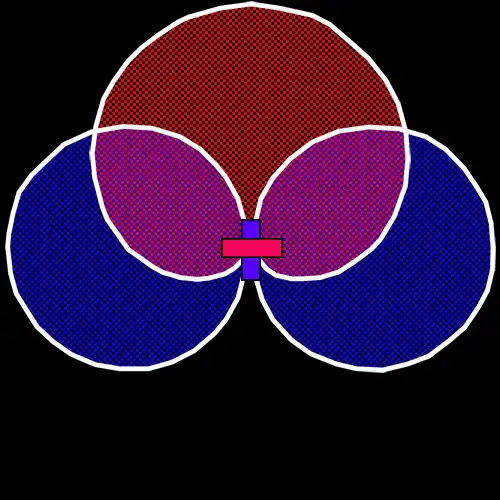
- Mid-Side Super-Cardioid
- Rotation: 90°
- (1) Lower Polar Pattern: Figure of '8'
- (2) Upper Polar Pattern: Super-Cardioid

- Mid-Side Wide-Cardioid
- Rotation: 90°
- (1) Lower Polar Pattern: Figure of '8'
- (2) Upper Polar Pattern: Wide-Cardioid
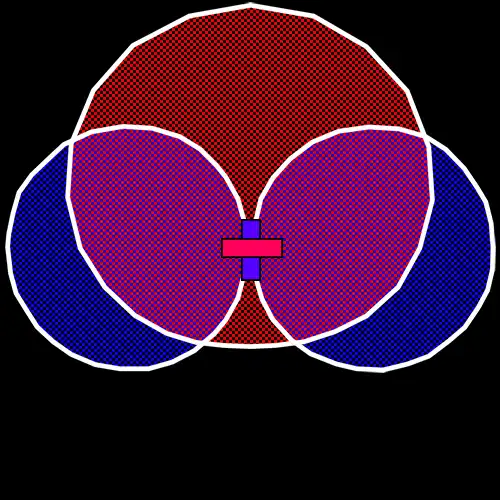
X-Y Coincident Pair Miking Technique:
A traditional X-Y Coincident Pair Miking technique has the capsules oriented at 90 degrees to each other in a cardioid pattern.
Modifying the angle between the mics and the polar pattern can affect the stereo image of the capture. Changing the pattern selection a couple clicks toward Figure of '8' will give you a Super Cardioid pattern. Moving the selector a couple clicks to Omni will give you a Wide Cardioid pattern. Again, the nuance of each individual situation will inform what the best setting will be for you. The diagrams below will help you begin to understand the possibilities that are capable with the P-24 in an X-Y Technique.
- X-Y 90° Traditional
- Rotation: 90°
- (1) Lower Polar Pattern: Cardioid
- (2) Upper Polar Pattern: Cardioid
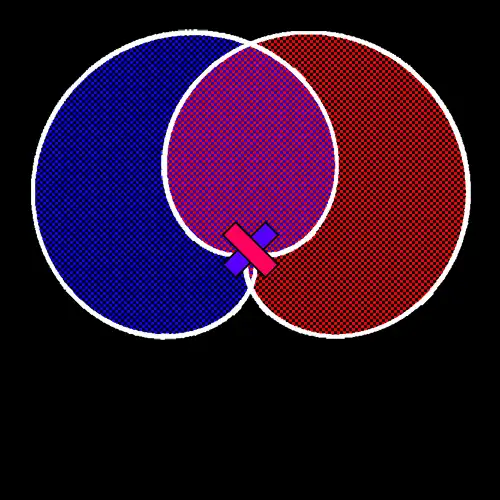
- X-Y 90° Super-Cardioid
- Rotation: 90°
- (1) Lower Polar Pattern: Super-Cardioid
- (2) Upper Polar Pattern: Super-Cardioid
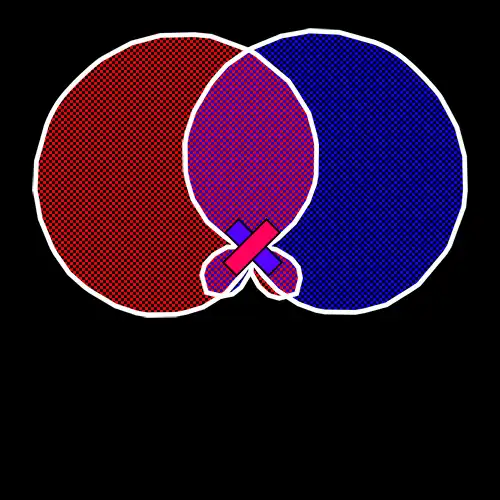
- X-Y 90° Wide-Cardioid
- Rotation: 90°
- (1) Lower Polar Pattern: Wide-Cardioid
- (2) Upper Polar Pattern: Wide-Cardioid
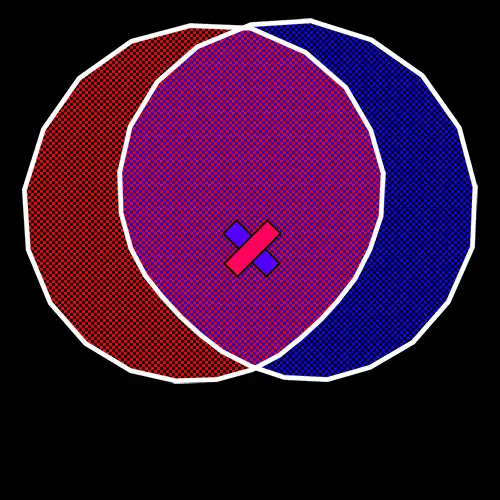
- X-Y 120° Cardioid
- Rotation: 120°
- (1) Lower Polar Pattern: Cardioid
- (2) Upper Polar Pattern: Cardioid
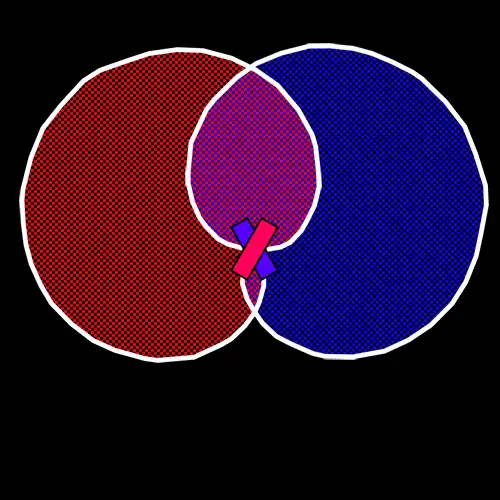
- X-Y 120° Super-Cardioid
- Rotation: 120°
- (1) Lower Polar Pattern: Super-Cardioid
- (2) Upper Polar Pattern: Super-Cardioid

- X-Y 120° Wide-Cardioid
- Rotation: 120°
- (1) Lower Polar Pattern: Wide-Cardioid
- (2) Upper Polar Pattern: Wide-Cardioid
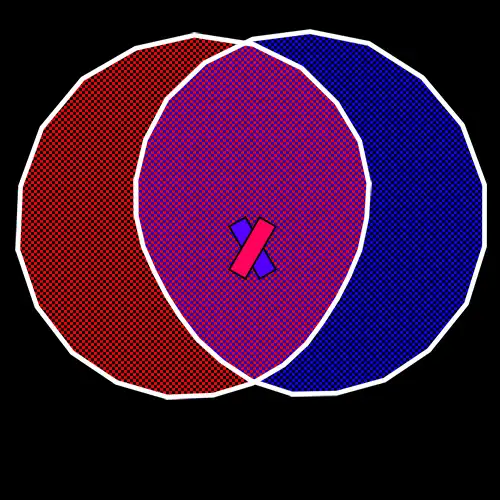
Media
Our community of artists, engineers, and reviewers are begining to put the P-24 through its paces. We present the following content to help you better understand the unique nature of this microphone.
P-24 YouTube Playlist
SoundCloud Content Samples
These SoundCloud samples provided here are intended to provide examples of the selected microphone in use on specific sources and vocals. Some samples are provided both inside a mix and as isolated raw tracks. These samples are available for high resolution download to be experienced within your own listening environment and signal chain. We give credit and thanks to the artists who have provided these! If you find this helpful and have a sample you'd like to include please contact us!
Reviews

Paul Vnuk Reviewed the P-24 in the February 2025 issue of RECording Magazine!
"Once again, Peluos Microphone Lab has knocked it out of the park with the P-24..."
Reviews

The Peluso P-24 makes it easy to experiment with any of the classic stereo recording techniques using a single microphone. There’s no worry about phase and levels, as you might get when using two separate mics, and your recordings will take on a three-dimensional quality immediately. Recommended highly.
Cut Sheet
A one sheet .pdf you can save and share with the full description, features, and specification of this microphone.
Brochure
A .pdf brochure you can save and share containing cut sheets for all of the microphones we produce.



